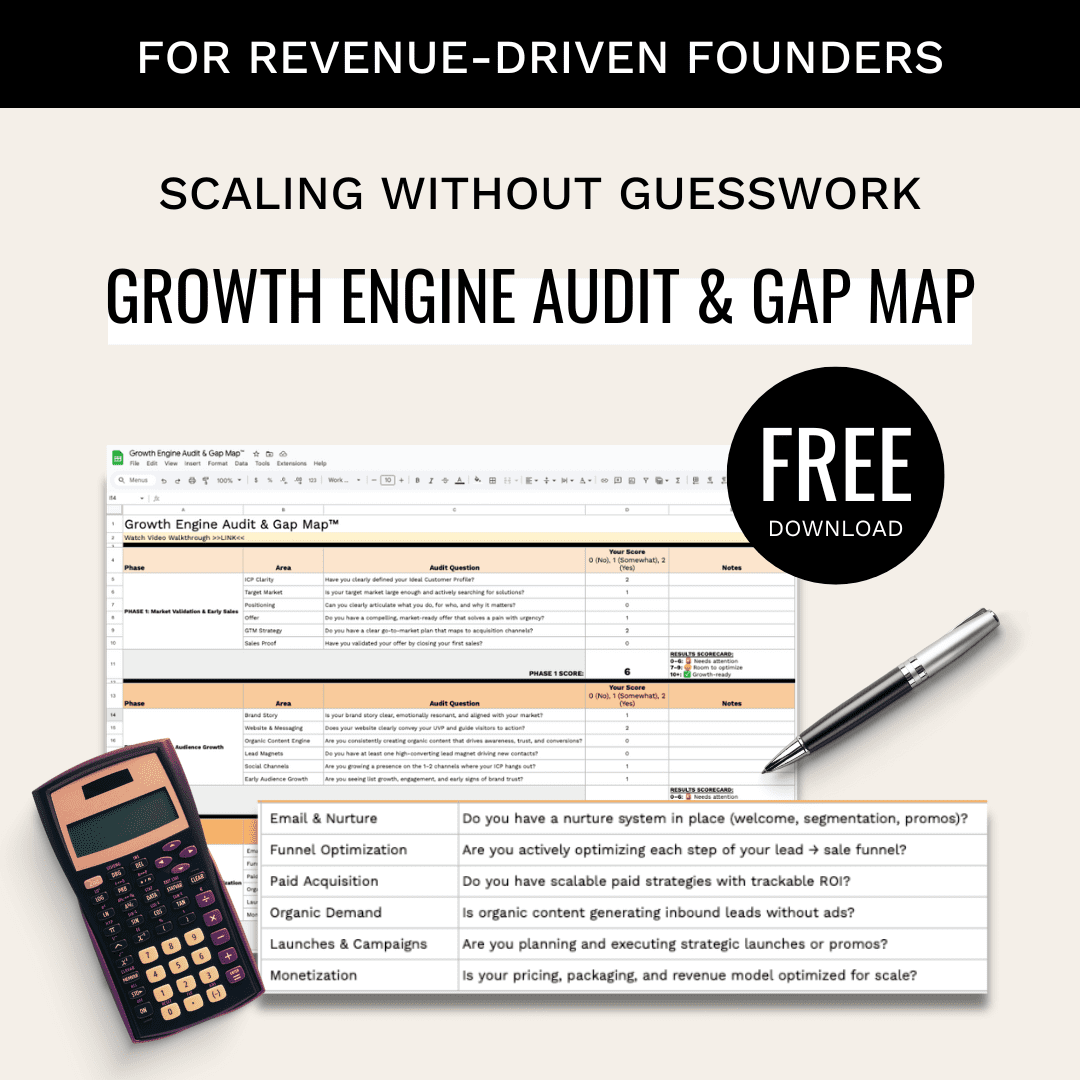Ever heard about Omnichannel Analytics and Channel Scoring? For all you data professionals out there who are looking to make their break in the marketing analytics space, you’ll want to make sure you’re hip to “channel scoring” because it’s one of those powerful yet oh-so underutilized marketing data practices around.
In this article, I’m going to tell you what channel scoring is, how it’s helpful and how to get it done in 5 simple steps.
YouTube URL: https://youtu.be/dokBZ73XieQ
If you prefer to read instead of watch then, read on…
For the best data leadership and business-building advice on block, subscribe to my newsletter below and I’ll make sure you get notified when a new blog installment gets released (each week). 👇
Who am I to tell you about omnichannel analytics and channel scoring? Well, we’ve been using channel scoring in my business, data mania, since 2017. I also just wrote a whole section about it this week while working to update my book, Data Science For Dummies 3rd Edition.
Hi, I’m Lillian Pierson and I support data professionals to become world-class data leaders and entrepreneurs.
Channel scoring pretty much assumes that you have more than 1 marketing channel or what we call “Omnichannel.” We’re also going to assume in this article that you know what a channel is.
If you need to get up to speed on what a channel is or what omnichannel analytics is – I recommend you first watch the video I did about Omnichannel analytics. It’s actually a prequel to this post. Check it out here.
What is Channel Scoring?
Channel scoring is the practice of analyzing your company’s current sales and marketing data to identify where your customers are coming from, and then assign a score to each of those “channels” based on how well the channel is converting leads and sales for your business.
To represent your findings, you create a channel that visually displays the current importance of your various channels, relative to one another.
When we’re talking about omnichannel analytics and channel scoring, we’re always talking about sales and leads for your business, not anything related to vanity metrics or having a popular social media account. We’re talking about the performances of your marketing campaigns and sales efforts that your company has invested in, with respect to leads and sales – that’s your ROI.
With channel scoring, you would create a channel scorecard which visually shows your findings on one channel against another for a bird’s eye view.
Benefits of channel scoring:
- Improve your sales and marketing strategy
- Improve your ROI
- Identify the underperforming channels
- Figure out what’s working and what’s not
- Make improvements on those non-performing channels while still garnering great results from other channels
Here on my channel, we’re all data professionals but we’re not all marketing data professionals. You may have experience in scoring all types of things that you could be scoring, like retail outlets, distribution chains, or logistics scoring, etc. so I’d love to hear from you, tell us in the comments:
What type of data-intensive scoring methods do you currently have experience with?
There are a number of ways you can go about scoring your sales channels, but I created a simplified 5-step approach, just to give you a quick snapshot here:
Step 1: Map Your Channels
 Itemize all the different channels that generate sales, those are your sales and marketing channels.
Itemize all the different channels that generate sales, those are your sales and marketing channels.
- Marketing Channels – the channels by which people become aware of your products and services to warm them for sales.
- Sales Channels – where the sale is actually made as well as the point of distribution.
Step 2: Score Your Channels
Evaluate each of those channels against one another. Score them out based on the number of sales and leads that are generated from the marketing channels. Important metrics you can use to help you score your channels out may include:
- Customer lifetime value. You can use the traditional approach where you use averages or you can get sophisticated and bring in machine learning to do predictive customer lifetime value estimates.
- Customer reviews and satisfaction metrics
- Upsell, downsell, and subscription renewal rates
- Ticket volume
- Customer profitability
What you’re really trying to do here is build a profile of your marketing channels. The main goal is to help you understand the quality of the customers that are coming through each of your channels. Even if you were to score each channel against one another, just looking at these metrics alone can be incredibly valuable in terms of improving your marketing strategy. That’s because when you start looking into these metrics and take a deeper dive into why things are happening the way they do, you will uncover all kinds of opportunities that you can use to supercharge what you’ve got going on in your business today and make it even more powerful. You can also identify what’s not working and try to figure out how to improve it. You can also change your marketing strategy based on your findings.
Channel scoring just takes things a few steps forward.
Step 3: Create a Channel Scorecard
Channel Scorecard is a visual representation of your analytical findings. It is a communication and summarization tool. Summarize your findings for each of the metrics by creating a scorecard for each channel.
Step 4: Define a Customer Avatar for Each Channel
You need to get some behavioral analytics that describe people’s preference and behavior on each of your marketing channels. Generally, it involves going into the actual marketing channel and using their built-in analytics. That is, unless you have a sophisticated marketing analytics recording tool like Keyhole. But for all intents and purposes, you can generally get away with using the in-platform analytics provided on most of the social media channels or through Google Analytics.
This information will start giving you an idea of people’s preferences and what they’re really looking for in your company.
Spoiler Alert: It generally isn’t the same thing on each of your different marketing channels – which is why you have to go into your channel analytics to see what is performing well, what people are loving on each of your channels and then figure out your strategy from there.
Another important part about developing an avatar in each of your channels is, you have to think about your existing customers and consider their personal attributes. Then, make some educated guesses about what types of customers fit into each of the channels in your channel portfolio.
Step 4: Tweak Your Sales and Marketing Strategy
Looking at this customer avatar along with the channel scorecard for each channel, decide what changes you can make to improve channel performance, so that it better supports your company’s overall sales strategy and goals.

This is a scorecard I created for my channel’s scores for March 2021. This is just an example of what your channel scorecard might look like after you’ve completed the 5-step process described above. In this example, we looked at LinkedIn, Search, Instagram and Email. Watch the video featured above to know how I scored each of these channels in more detail.
Unfortunately there is no exact cut-and-dry formula to use for assigning a score to a particular channel. You really need to get into your channel numbers and account for which channels are generating the most leads and sales. These metrics should be weighted in importance. Then, look to see how that success is being reflected in the channel data, in terms of customer engagement statistics with your channels. Based on these numbers for each channel, you need to then assign a relative score for all of your sales and marketing channels.
How Channel Scoring is Helpful
- Customer acquisition: When you fine-tune your marketing strategy so that it aligns better with your customer desires and expectations along each channel, your marketing ROI will immediately increase. That is going to improve brand trust. It’ll also make it easier for your company to make sales from within those channels. Hence, it’s lowering the cost of customer acquisition, which is definitely a good thing.
- Customer retention: Fine-tuning your sales and marketing strategy so that your company keeps on pulse with changes and evolution of its customer desires will help keep your existing customers coming back for more – driving an up-tick in repeat purchases and word-of-mouth marketing.
- New product or service development: By using omnichannel analytics and channel scoring in the way discussed above, you’ll have a much more granular view of your customer and his or her preferences. This perspective is, of course, helpful in designing products and services that your customers need, want, and adore.
If you liked this article on using omnichannel analytics and channel scoring to improve your marketing strategy and increase ROI, you’d probably get a lot from my data strategy action plan. It’s a step-by-step checklist & collaborative Trello Board planner for data professionals who want to get unstuck & up-leveled into their next promotion by delivering a fail-proof data strategy plan for their data projects.
Start executing upon our Data Strategy Action Plan today.
You may also love it inside our Data Leader and Entrepreneur Community on Facebook. It’s chalked full of some of the internet’s most up-and-coming data leaders and entrepreneurs who’ve come together to inspire and uplift one another.
Join our community here.
Hey! If you liked this post, I’d really appreciate it if you’d share the love with your peers! Share it on your favorite social network by clicking on one of the share buttons below!
NOTE: This description contains affiliate links that allow you to find the items mentioned in this article and support the channel at no cost to you. While this blog may earn minimal sums when the reader uses the links, the reader is in NO WAY obligated to use these links. Thank you for your support!





